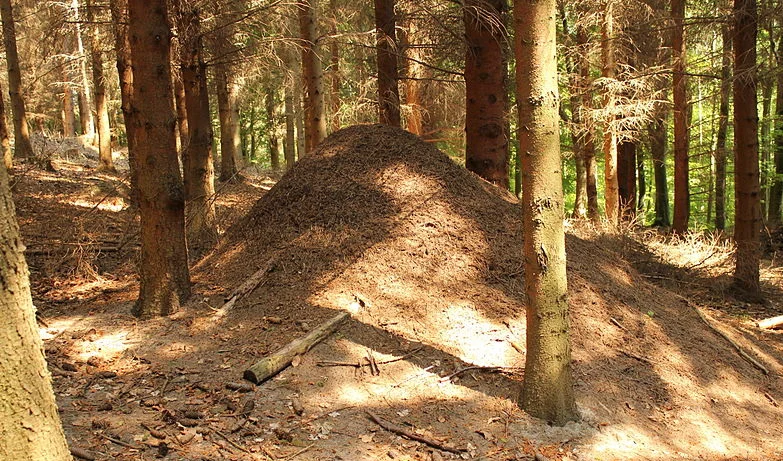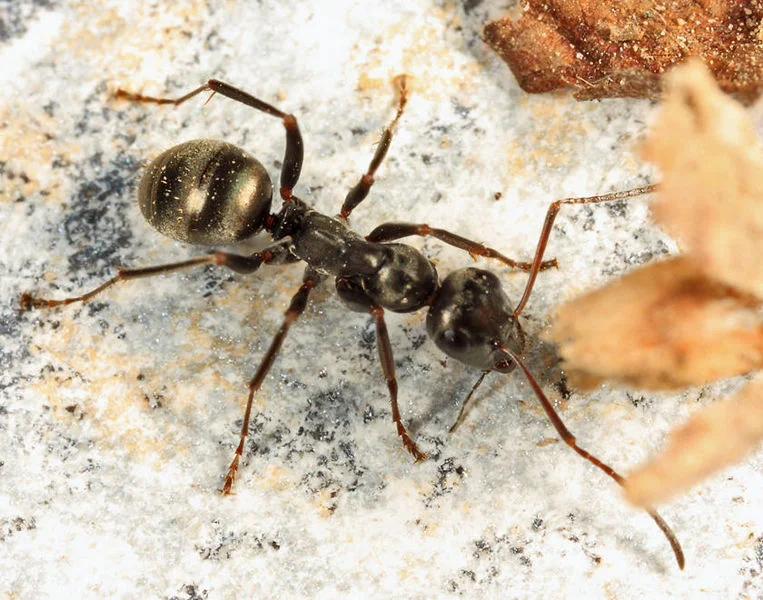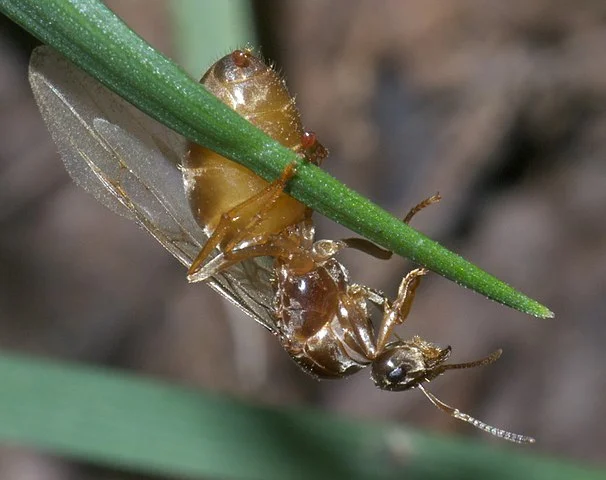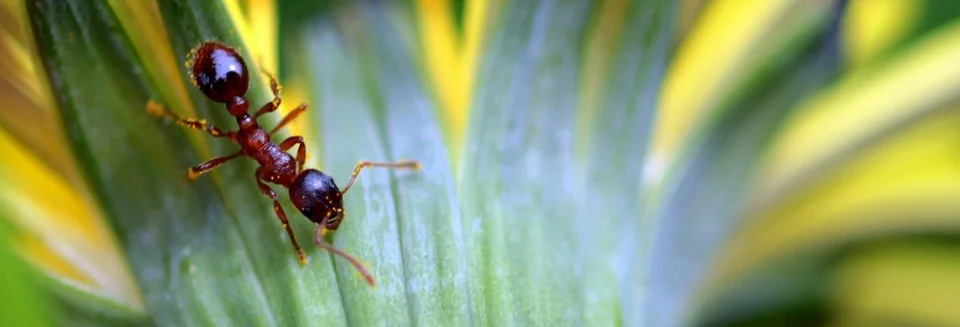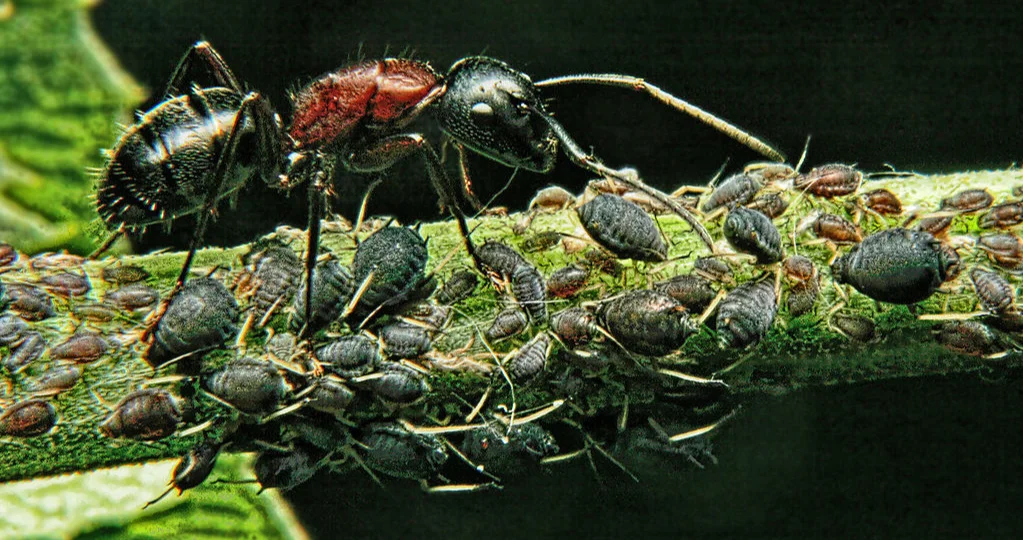Could Ants Revolutionize Organic Pest Management?
Most growers are familiar with beneficial insects - wasps, ladybugs, praying mantids - and their key role in controlling pests. It’s odd, then, that we never hear about the most numerous and successful insect on the planet, and how it might be the best ally we have in the garden. Ants have been used for millennia around the world for pest control in forests, farms, and gardens. A fair amount of research has already been published on using predatory ants in the tropics, subtropics, and Europe. However, the use of ants to control pests in North America is a field of research almost completely overlooked. There are only a handful of studies or mentions of suitable species, but what does exist points to the incredible potential of predatory ants to revolutionize biological pest control here. Finding the right species or complexes of ants for commercial farms and forests in North America could significantly reduce chemical inputs, and offer a far more sustainable and inexpensive way to manage crops and timber products.
And the best part?
Anyone can do it.
Creating huge colonies, the Formica rufa ant is widely used to control timber pests in the highly managed forests of central Europe
One only needs to look to the rest of the world to see how effective ant colonies can be at keeping pest outbreaks in check. The Kayapo tribe of Brazil’s Amazon Basin, for instance, have perfected agroforestry techniques for their local ecology. One of their strategies is to break up existing colonies of a predatory Azteca ant and bring the pieces to areas of the forest garden where that ant doesn’t live yet. This species will devour leaf-cutter ants and other pests, allowing for their crops to grow unimpeded. In the highly managed forests of Europe, the Formica rufa ant is widely propagated due to its large colony sizes and highly predaceous nature - eliminating defoliating insects at all levels of the forest. In India I visited an organic farmer who found that, after he ceased using chemical pesticides, predatory ants reappeared and used his vegetable field as their hunting ground - effectively eliminating his crop losses to insect pests.
For organic gardeners, farmers, and foresters in North America, utilizing predatory ants to control insect outbreaks is one of the most promising strategies that has been almost completely untested. Finding the right species for your land could significantly reduce costs (pesticide, labor, losses to outbreaks, etc.). With invasive insects destroying entire genera of native forest trees - like Emerald Ash Borer, Hemlock Woolly Adelgid, and others - finding an ant species that could effectively reduce these pests could save local tree populations from extinction. This article aims only to open the door - it is our hope that people with greater expertise and interest can follow this research and conduct experiments of their own, for the benefit of us all.
Formica subsericea - a native ant species shown to be an effective biological pest control in East Coast orchards. (Source)
Orchards stand to benefit more than most from strategic use of ants. In one study that is a treasure-trove of information, a number of ant species were found to be highly effective (even more than the popular Trichogramma predatory wasps) at controlling codling moth populations in a West Virginia apple orchard. Although the nomenclature in this study is occasionally outdated (what they refer to as Formica fusca in this context is today called Formica subsericea), it goes more in depth than any other paper about how varying species of predaceous ants deal with orchard pests. Of the ants they found to be predators of codling moth, Solenopsis molesta, Formica subsericea, Formica pallidefulva, Tetramorium caespitum, and Monomorium minimum were the species with the greatest impact, while Pheidole pilifera, Lasius americanus, Lasius neoniger, Prenolepis imparis, Formica integra, Tapinoma sessile, and Crematogaster cerasi were all helpful but less aggressive predators. This study additionally recorded ant colony numbers (by species) in commercial and unsprayed orchards, demonstrating that almost all ant species were functionally absent from the commercial/sprayed ones. In other words, to enjoy the benefits of predaceous ants on your farm, it’s vital to limit or eliminate the use of heavy-duty chemical sprays, and utilize more holistic pest and disease control measures.
On the West Coast, meanwhile, experiments have shown that native ant species like Formica neoclara, Lasius pallitarsis, and Lasius neoniger (the last two also present on the East Coast), are all effective at controlling pear psylla, with psylla populations many times smaller on trees where the ants were present. Incidentally, Lasius neoniger (commonly called cornfield ants) are a prime example of another way that ants benefit land management. Like most ants, they provide excellent soil aeration (particularly beneficial in areas with significant soil compaction) and can even triple the rate of soil respiration, transferring nutrients and beneficial fungal spores through the soil profile.
A queen cornfield ant, Lasius neoniger, shown to be effective at eliminating orchard pests and aerating soil (Source)
In other studies, Solenopsis geminata (a native fire ant in the Southeast) was found to be an effective pest control on soybeans, and another southern native ant, Pheidole morrisii, was one of the primary predators of velvetbean caterpillar larvae on the ground. In Georgia, native red wood ant Formica integra was found to be an effective predator of pine sawfly, and may be of greater use as a biological control agent in other applications as well. Other West Coast studies noted that Camponotus species, Formica criniventris, and Formica obscuripes reduced spruce budworm populations on spruce trees by over 90%. With such promising results, any of these species would be an excellent starting point for experimenting with ants as pest control in other contexts.
For those who want to dive deeper and transplant ant colonies on their own land, there are resources as well. Experiments demonstrating the effectiveness of ants in controlling orchard pests have also detailed the exact methods for collecting and transplanting ant colonies. These strategies are simple enough to be accomplished by any gardener. There are even instructions for establishing new colonies in an orchard. Efforts to transplant Formica obscuripes colonies also found that 20m spacing between colonies worked better than tighter 5m spacing. As far as finding colonies of ants to work with, they can be ordered online, or found directly in the field.
Many ant species will patrol and forage for prey near their colony. Some, like Pheidole morrisii, hunt on the ground, while others like Formica integra will search over entire trees
In choosing the right ant species, it is important to pick one that is aggressive and large enough (such as species in genera Formica and Camponotus) to take down larger larvae and insects, but one that also creates large colonies and is polygynous (i.e. whose colonies contain multiple queens), in order to facilitate easier division and propagation of colonies. There are very few ants native to North America that can accomplish both of these requirements. Most of the native polygynous predatory ants are in the genus Formica, such as:
Formica ulkei (in the colder areas of North Amerca)
Formica subsericea (East Coast - shown in the Virginia study to be effective in orchards)
Formica podzolica (West Coast and Northeast)
Formica occulta (West Coast)
Formica obscuripes (West Coast and Northeast, used with varying results against forest pests in Quebec)
Formica neogagates (North America)
Formica neoclara (West Coast, shown to be effective in pear orchards)
Formica integra (North America, shown to be effective in timber stands in the Southeast)
Formica exsectoides (East Coast)
Formica argentea (North America)
Formica accreta (West Coast)
Formica neoclara - a West Coast ant, pictured here tending aphids. It has been shown to be an effective predator of orchard pests. (Source)
These species should be trialed by farmers, foresters, and orchardists in their native ranges to determine effectiveness in pest control, ease of propagating colonies, and any negative side-effects (i.e. an abundance of aphids). Some have also suggested that establishing a guild or a complex of different species on a site could be better than just establishing a single species - and indeed, this would allow for greater chances of finding optimal outcomes.
Researchers in the 1970s found that imported European ants - namely Formica lugubris - could be effective as well, but long-term studies have not been conducted, and there is always high risk of unintended consequences (such as invasiveness) when importing ants from other parts of the world. Importing ants from other areas, indeed, can have a variety of unintended consequences. Five million Formica obscuripes ants were transported from Manitoba to Quebec for sawfly control, but wound up being responsible for an outbreak of aphids on Jack pine.
Many ant species will herd and milk aphids like livestock. Here an ant is guarding a collection of aphids in Virginia. (Source)
The relationship between ants and aphids is vital to understand before establishing a new species on your land. Many ant species “herd” aphids the same way that humans herd livestock. They “milk” the aphids by drinking honeydew that is secreted by the tiny insects (seen here), and will also slaughter and eat aphids in lean times. On the other hand, ants also defend aphids, and will often attack any insect nearby - including crop pests. Some ant species will allow aphid populations to proliferate, with deleterious effects on crops. In other circumstances, aphid populations are not a problem, and can in fact be a benefit. For instance, aphids feeding on fir trees in Europe emit honeydew that honeybees collect. The honey made by bees from this aphid honeydew excretion is called Tannenhonig, and is a highly prized edible and medicinal delicacy in parts of Europe, commanding high prices at market. Additionally, Formica species of ants won’t just kill the insects you’re targeting. During a pest outbreak, around 7% of their prey will be other beneficial insects, while non-outbreak times that number jumps to 15-20%. If you have healthy populations of beneficial insects already, this is less of an issue, but still a factor to keep in mind.
With such promising findings across North America, a number of native ant species could potentially be used to revolutionize pest control in farms, gardens, and forests here. More research needs to be done to determine which species are best for different sites and applications, as well as what side-effects could occur. Without greater interest from academia, however, the onus is on us as growers to learn more about myrmecology and our ant neighbors, and begin identifying and noting the effects of different species on our land. The results might surprise you, and may even prove to be one of the best land management tools at your disposal.

